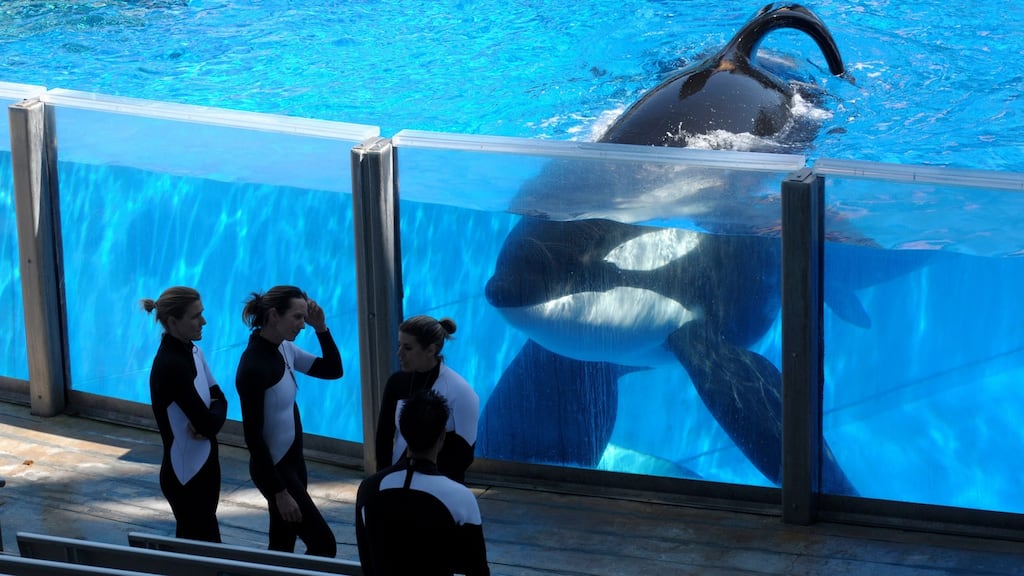Tilikum, an orca or killer whale that killed a trainer at SeaWorld Orlando in 2010, has died.
SeaWorld said in a statement posted online that Tilikum died on Friday.
A cause of death has not yet been determined, although the killer whale was being treated for a persistent bacterial infection. He was estimated to be 36 years old.
Tilikum was profiled in the documentary Blackfish, which helped sway popular opinion against the keeping of killer whales in captivity at SeaWorld parks.
SeaWorld’s most prolific male orca had sired 14 calves in the 23 years he was at Orlando.
Criticism over keeping orcas captive grew after Tilikum grabbed trainer Dawn Brancheau following a Dine with Shamu show and pulled her into the pool, killing her.
Tilikum had been involved in the deaths of two other people in the 1990s.
‘Special place in hearts’
Tilikum SeaWorld president and chief executive Joel Manby said: "Tilikum had, and will continue to have, a special place in the hearts of the SeaWorld family, as well as the millions of people all over the world that he inspired.
“My heart goes out to our team who cared for him like family.”
Tilikum was noticeable for his size, at more than 22ft and 11,800lb.
He was born off the waters of Iceland and moved to the Sealand of the Pacific aquarium in Canada after being captured.
While at Sealand in 1992, Tilikum and two female orcas were responsible for the death of a part-time trainer who slipped and fell into their pool and was submerged by them.
Tilikum was moved to SeaWorld Orlando a short time later, and Sealand later closed.
In 1999, a naked man who had eluded security and sneaked into SeaWorld at night was found dead the next morning, draped over Tilikum in a breeding tank in the back of Shamu Stadium.
It was the death of Ms Brancheau that left the biggest impact on the future of orcas at SeaWorld parks.
She was interacting with Tilikum before a live audience at SeaWorld Orlando when he pulled her from a platform by her arm and held her under the water. A postmortem said Ms Brancheau drowned but also suffered severe trauma, including multiple fractures.
SeaWorld Entertainment officials announced in March last year that the tourist attraction would end its orca breeding programme and theatrical shows involving killer whales.
The decision came six years after Ms Brancheau’s death and three years after the release of Blackfish, which chronicled Tilikum’s life and Ms Brancheau’s death.
The documentary argued that killer whales held in captivity become more aggressive towards humans and each other.
Demonstrations increased
After the documentary played at the Sundance Film Festival and aired on CNN, several entertainers pulled out of planned performances at SeaWorld sites and animal rights activists increased their demonstrations outside the parks.
Attendance at SeaWorld parks dipped, the company faced falling profits and Southwest Airlines ended its 25-year relationship with the theme park company.
In March, Mr Manby acknowledged the public's attitude to keeping killer whales captive had changed and that the company would end its orca breeding programme.
“We needed to move where society was moving,” he said.
AP










